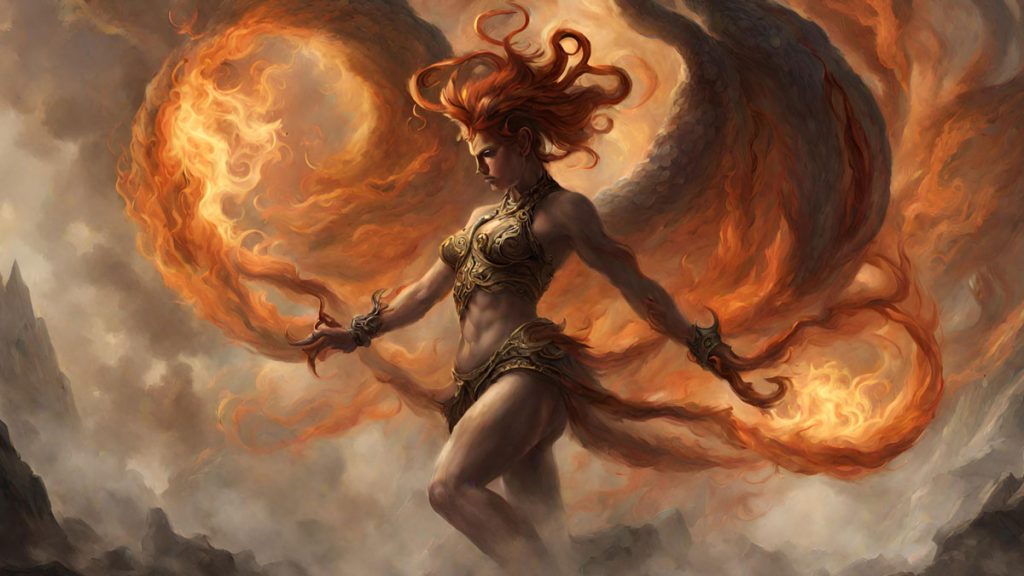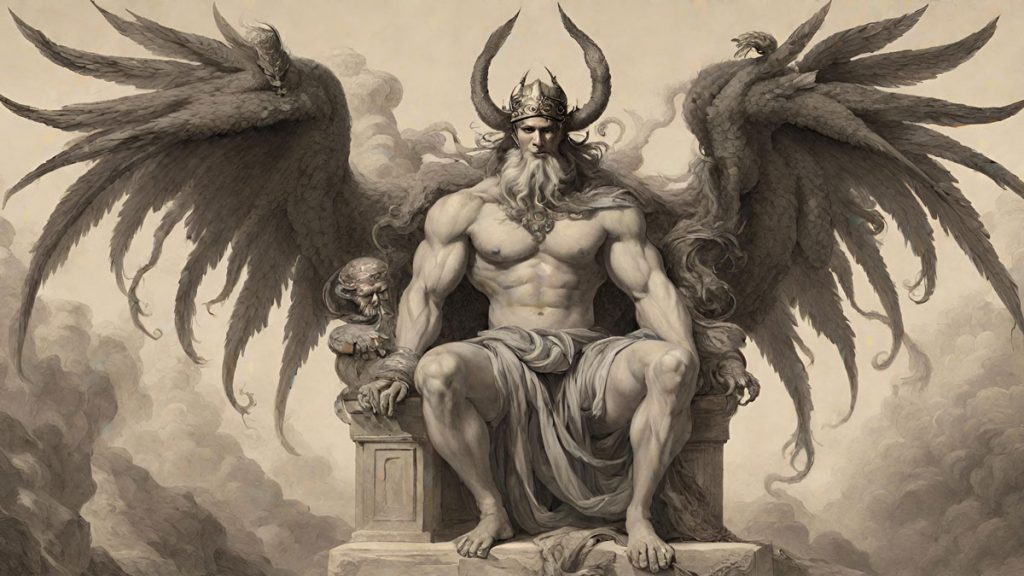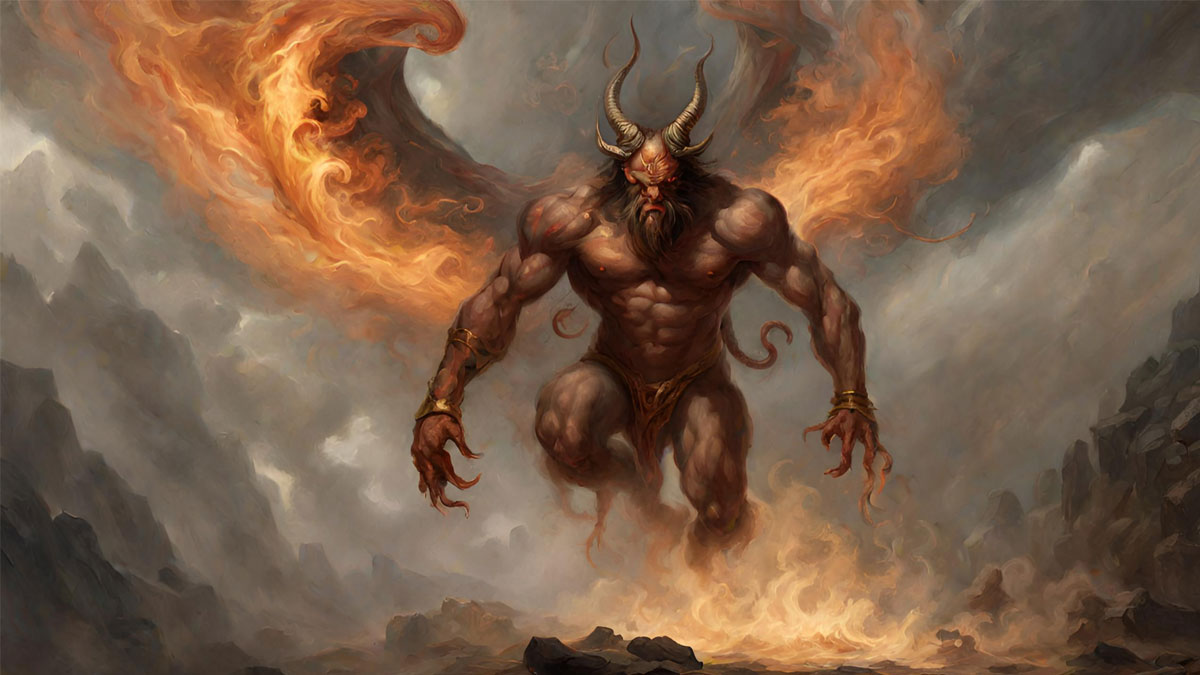An ifrit is a powerful, supernatural being found within Islamic teachings and folklore. The ifrit has come to be classed as a particularly strong type of jinn, a member of a race of spiritual beings created by God from fire, and considered less powerful than angels but stronger than humans.
Like other jinn, the ifrit has free will and can be good or evil, but within religious documents and folklore, they tend to be mostly malicious toward humans. Many of the jinn, including ifrit, are thought to have been created by God to ensure a balance on earth between the forces of good and evil.
Description of the ifrit and its habitat
The ifrit inhabits a world largely unseen to humans, and sightings are rare, meaning descriptions are vague. However, they are usually described as huge, strong, winged creatures surrounded by swirling smoke. They can be male or female.
Some scholars have placed the ifrit as dwellers in the unseen world known within Islam as Al-Ghaib; this term can refer to both heaven and hell. Other sources argue that the ifrit and other jinns inhabit a different unseen plain to Al-Ghaib. But they are thought to live underground and are regularly found in or around ruins.
Some sources say the ifrit live within a social society that resembles the tribal structures of ancient Arabia. They are divided into clans that use kings and queens for governance. They mostly marry each other but have been known to form relationships with humans.
The ifrit are exceptionally strong and difficult to kill; ordinary weapons cannot harm them, but humans can use magic to trap or even kill them.
The origin of ifrit word may give clues to the creature’s origin
There are multiple versions of the spelling: afreet, afrit, afrite, or efreet, and afārīt for the plural. In Arabic, a male is an ifrīt, and a female is an ifrītah, and the source of this word may be key to understanding the origin of the ifrit.

The word Ifrit does not occur in pre-Islamic literature, so the creature may be seen as a product of purely Islamic culture and literature. The Ifrit is mentioned only once in the Quran, where verse 27:39 is often translated as “An ifrit from the jinn said: ‘I will bring it to you before you rise from your place. And verily, I am indeed strong and trustworthy for such work.”
قَالَ عِفۡرِيتٞ مِّنَ ٱلۡجِنِّ أَنَا۠ ءَاتِيكَ بِهِۦ قَبۡلَ أَن تَقُومَ مِن مَّقَامِكَۖ وَإِنِّي عَلَيۡهِ لَقَوِيٌّ أَمِينٞ
The ifrit in question was offering to carry the throne of Bilqis to Soloman, but his offer was declined in favor of someone who had a knowledge of scripture.
However, many Islamic scholars often translate ifrit in different ways. Most commonly, it is translated as either “strong,” “mighty,” or “rebellious,” meaning the verse actually reads, “A strong [or mighty] jinn said…etc” This implies that the word ifrit may have been a mere adjective used only to describe particularly strong jinns.
Ifrit is repeated multiple times in the Hadiths to describe other jinns. Hadiths encompass a large body of sayings and traditions attributed to the Prophet Muhammad and are much revered within Islam. But also within the Hadiths, the phrase “Ifrit from [or of] the jinn” is used.
Arabian philologists believe the word itself might come from a deviation of the Arab word afara, which means “to rub with dust” or “to roll into dust.” It is theorized that the word then evolved to mean someone who is malicious or sly.
In the nineteenth century, theologian and Middle Eastern language specialist Karl Vollers expanded his theory that the word Ifrit actually came from Iran. Vollers claimed it derived from the Middle Persian word afrid, meaning “created.” Scholars have since suggested that afrid came from an expression meaning “demon created” or perhaps simply, “creature.” This theory is widely disputed.
The ifrit in Islamic folklore
Outside of the Quran and the Hadiths, the ifrit have morphed within Islamic folklore and literature into their own class of jinn.
Twelfth-century Iraqi writer Abd Al Munim Al Gilyani reportedly recounted a story told to him about an ifrit by the Shabak community, who lived near modern-day Mosel in Iraq. The story stated that in the time before Adam, Iman Ali was angered by an ifrit because he was a non-believer. Iman Ali caught the creature and chained it up.

When God later created Adam, the ifrit appealed to him for his freedom, but Adam did not have the power to release him. The ifrit later appealed to Noah and all subsequent prophets, but none were able to free him. Finally, the ifrit appealed to Mohammad, who asked Ali to free him. Ali said he would only do so if the creature converted to Islam. Once the ifrit accepted the faith, Ali shattered the iron shackles.
In Western societies, the ifrit is perhaps best known for its appearances in the collection of Arabian folklore tales known as the One Thousand and One Nights, more commonly known as The Arabian Nights. This book is a collection of stories from the Middle East, some of which date as far back as the Abbasid Caliphate, which reigned from the 8th to the 14th century.
The ifrit and One Thousand and One Nights, aka the Arabian Nights
The Arabian Knights feature various stories involving an ifrit. The tales usually feature a mischievous or evil ifrit being outwitted by a human. One story tells of a wealthy merchant who stopped in a remote desert area for a rest. He ate a date and threw the fruit’s stone in the sand, which caused an ifrit to appear with a drawn sword. The being accused the merchant of killing his son when he threw the date stone and announced he would kill him as punishment.
The merchant persuaded the ifrit to let him live for another year. When the merchant returned a year later to meet his fate, he was unexpectedly aided by three old men who distracted the ifrit with three tales of their own. The ifrit, regaled by the three old men, eventually agreed to let the merchant go free.
Another story tells of a fisherman who accidentally released an ifrit from a jar. He then managed to trick the creature back into the jar, and the creature promised him riches for his release. Stories like this led to tales of Aladdin’s Lamp and all the following Western adaptations. The story of Aladdin’s Lamp is often assumed to have been featured in the original version of the Arabian Nights, but it was added later; however, the story does originate in the Middle East.
In later literature, the ifrit becomes a bit confused with another creature known as a marid. This is another jinn creature that is considered particularly malevolent and hideous. The marid is associated with Shaitan demons, but in some literature, the differences between it and an ifrit have become blurred.
References
Britannica.com, “Ifrit,” accessed March 8, 2024.
Cheung, Johnny,. HAL-SHS.Science.com, “On the (Middle) Iranian borrowings in Qur’ānic (and pre-Islamic) Arabic,” accessed March 8, 2024.
Doniger, Wendy. Merriam-Webster’s Encyclopedia of World Religions, 1999. https://tinyurl.com/48ab6uvx, accessed March 12, 2024.
Moosa, Matti. Extremist Shiites: The Ghulat Sects, 1987. https://www.google.com/books/edition/Extremist_Shiites/WYO1BqdvX9EC?hl=en&gbpv=0, accessed March 8, 2024.
Quran.com, “Surah An-Naml 27:39,” accessed March 12, 2024.
Scholarly Community Encyclopedia, “Ifrit,” accessed March 12, 2024.
Study.com, “Ifrit in Mythology: Origin, Depiction & Belief,” accessed March 12, 2024.
The Arabian Nights: Tales of 1,001 Nights, Volume 1, “Nights 1 to 20,” accessed March 8, 2024.
